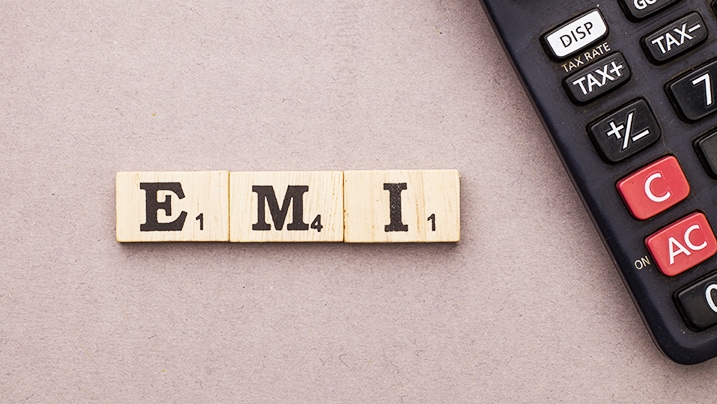CKYC Registry
-
Customer Service Contact us Service request Locate a branch
Find all the help you need
Scan the QR, get our app, and find help on your fingertips

Help CenterSupport topics, Contact us, FAQs and more
-
Login
Are you ready for an upgrade?
Login to the new experience with best features and services
-
Login
Are you ready for an upgrade?
Login to the new experience with best features and services
- Accounts
-
Deposits
IDFC FIRST Bank Deposits
View all Deposits -
Loans
IDFC FIRST Bank Loans
View all Loans - Wealth & Insure
-
Payments
IDFC FIRST Bank Payments
View all Payments -
Cards
IDFC FIRST Bank Cards
View all Cards - Blogs
- Corporate Account
-
Cash Management Services
IDFC FIRST Bank Cash Management Services
View all Cash Management Services - Supply Chain Finance
-
Corporate Lending
IDFC FIRST Bank Lending
View all -
Treasury
IDFC FIRST Bank Treasury
See more details - NBFC Financing
Support topics, Contact us, FAQs and more
- IDFC FIRST Bank Accounts
-
Savings Account
-
Corporate Salary
Account -
Senior Citizens
Savings Account -
First Power
Account -
Current Account
-
NRI Savings
Account -
TASC Institutional
Account -
Savings Account
Interest Calculator
- IDFC FIRST Bank Deposits
-
Fixed Deposit
-
Recurring Deposit
-
NRI Fixed Deposit
-
Safe Deposit Locker
-
FD Calculator
-
RD Calculator
- IDFC FIRST Bank Loans
-
Personal Loan
-
Consumer Durable
Loan -
Home Loan
-
Business Loan
-
Professional Loan
-
Education Loan
-
New Car Loan
-
Pre-owned Car Loan
-
Two Wheeler Loan
-
Pre-owned Two
Wheeler Loan -
Commercial Vehicle
Loan -
Gold Loan
-
Loan Against Property
-
Loan Against Securities
-
Easy Buy EMI card
-
Personal Loan
EMI Calculator -
Education Loan
EMI Calculator -
Home Loan
EMI Calculator
- IDFC FIRST Bank Wealth & Insure
-
FIRST Select
-
FIRST Wealth
-
FIRST Private
-
Mutual Funds
-
Sovereign Gold Bond
-
Demat Account
-
Term Insurance
-
Life Insurance
-
Health Insurance
-
General Insurance
-
Bonds
-
Loan Against
Securities -
Portfolio Management
Service
- IDFC FIRST Bank Payments
-
FASTag
-
Credit Card
Bill Payments -
UPI
-
Funds Transfer
-
Forex Services
-
Pay Loan EMI
- IDFC FIRST Bank Cards
-
Ashva :
Metal Credit Card -
Mayura :
Metal Credit Card -
FIRST Millennia
Credit Card -
FIRST Classic
Credit Card -
FIRST Select
Credit Card -
FIRST Wealth
Credit Card -
FIRST WOW!
Credit Card -
Deals
-
Debit Cards
-
Co-branded Cards
-
Credit Card
EMI Calculator -
FIRST Corporate
Credit Card -
FIRST Purchase
Credit Card -
FIRST Business
Credit Card
- Premium Metal Credit Cards
-
AshvaLifestyle1% Forex₹2,999
-
MayuraLifestyleZero Forex₹5,999
-
FIRST PrivateInvite Only
- Best for travellers
-
MayuraZero ForexMetal₹5,999
-
Ashva1% ForexMetal₹2,999
-
FIRST WOW!Zero ForexTravelLifetime Free
-
FIRST SWYPTravel OffersEMI₹499
-
FIRST Select1.99% ForexLifestyleLifetime Free
-
FIRST Wealth1.5% ForexLifestyleLifetime Free
-
Club VistaraTravelLifestyle₹4,999
-
IndiGo IDFC FIRST Dual Credit CardTravelLifestyle₹4,999
- Max benefits, Free for life
-
FIRST Classic10X RewardsShoppingNever Expiring Rewards
-
FIRST Millennia10X RewardsShoppingNever Expiring Rewards
-
FIRST Select10X RewardsLifestyle1.99% Forex
-
FIRST Wealth10X RewardsLifestyle1.5% Forex
-
FIRST WOW!RewardsTravelZero Forex
-
LIC ClassicRewardsInsuranceShopping
-
LIC SelectRewardsInsuranceShopping
- Reward Multipliers
-
AshvaLifestyleMetal₹2,999
-
MayuraLifestyleZero Forex₹5,999
-
FIRST ClassicNever Expiring RewardsShoppingLifetime Free
-
FIRST MillenniaNever Expiring RewardsShoppingLifetime Free
-
FIRST SelectNever Expiring RewardsLifestyleLifetime Free
-
FIRST WealthNever Expiring RewardsLifestyleLifetime Free
- Rewards & Credit on UPI
-
FIRST Power+FuelUPI₹499
-
FIRST PowerFuelUPI₹199
-
FIRST EA₹NVirtual1% Cashback₹499
-
FIRST DigitalVirtualUPI₹199
-
IndiGo IDFC FIRST Dual Credit CardUPITravelDual cards
- Fuel and Savings
-
FIRST PowerRewardsUPI₹199
-
FIRST Power+RewardsUPI₹499
-
LIC ClassicRewardsInsuranceShopping
-
LIC SelectRewardsInsuranceShopping
- Express and Flaunt
-
AshvaMetal1% Forex₹2,999
-
MayuraMetalZero Forex₹5,999
-
FIRST SWYPEMIOfferMAX₹499
-
FIRST MillenniaRewardsShoppingLifetime Free
- FD Backed rewarding Credit Cards for all
-
FIRST EA₹NVirtualCashback₹499
-
FIRST WOW!Zero ForexTravelLifetime Free
-
CreditPro Balance TransferTransfer & SaveReduce InterestPay Smartly
- IDFC FIRST Bank NRI Forex Solutions
-
Send money to India-Wire transfer
-
Send money to India-Digitally
-
Send money abroad
-
Max Returns FD (INR)
- IDFC FIRST Bank MSME Accounts
-
Platinum Current
Account -
Gold
Current Account -
Silver Plus
Current Account -
Merchant Multiplier
Account -
Agri Multiplier
Account -
TASC Institutional
Account -
Dynamic Current
Account -
World business
Account -
First Startup
Current Account
- IDFC FIRST Bank Business Loans
-
Business Loan
-
Professional Loan
-
Loan Against Property
-
Business Loan for Women
-
Working Capital Loan
-
Construction Equipment Loan
-
Machinery Loan
-
Healthcare Equipment Loan
- IDFC FIRST Bank Business Solutions
-
Payment Solutions
-
Tax Payments
-
Doorstep Banking
-
Point of Sale (POS)
-
Escrow Accounts
-
NACH
-
Payment Gateway
-
UPI
-
Virtual Accounts
-
As per amendment in the Income Tax Rules, PAN or Aadhaar are to be mandatorily quoted for cash deposit or withdrawal aggregating to Rupees twenty lakhs or more in a FY. Please update your PAN or Aadhaar. Kindly reach out to the Bank’s contact center on 1800 10 888 or visit the nearest IDFC FIRST Bank branch for further queries.
-
-
Most Searched
Sorry!
We couldn’t find ‘’ in our website
Here is what you can do :
- Try checking the spelling and search
- Search from below suggestions instead
- Widen your search & try a more generic keyword
Suggested
Get a Credit Card
Enjoy Zero Charges on All Commonly Used Savings Account Services
Open Account Now
Finance
Equated Monthly Installment (EMI): Types , Advantages, & Factors
Summary: EMIs are important, as they can help finance anything, from a smartphone to an entire apartment. Here is what you should know about them. Despite its glaring benefits, many people still do not know about the EMI payment method. It is rather surprising as EMIs have been around for years and are actively advocated by financial institutions. This article will help you grasp the comprehensive concept of EMIs.
What is the full form of EMI
EMI, which stands for Equated Monthly Instalment, refers to a predetermined fixed payment that borrowers make to lenders on a specific date each month. This regular instalment includes both the principal amount and the interest, allowing borrowers to gradually repay their loans over a set period. EMIs provide a structured repayment plan and are commonly used in various types of loans, such as home loans, car loans, and personal loans.
Commonly, the EMI amount remains constant throughout the loan tenure, making it easier for borrowers to plan their finances. In the initial stages of the loan, a larger portion of the EMI goes towards paying the interest, while over time, a greater portion is allocated to repaying the principal. However, you may also get a reducing-balance EMI depending on the bank where your monthly instalments reduce after each payment.
Calculating the EMI involves considering the loan amount, interest rate, and tenure. Changing any of these factors may either reduce or increase the EMI. EMIs are a convenient way to manage loan repayments, ensuring borrowers steadily reduce their debt. Missing EMI payments can result in penalties and negatively impact one's credit score, so it's essential to meet these obligations promptly.
READ MORE
How does an EMI work?
We have learned the meaning of an EMI but let us now learn how it works. When you take out a loan, such as a personal loan or home loan, the lender calculates the EMI based on the loan amount, interest rate, and tenure. The EMI comprises both principal repayment and interest.
In the initial EMI payments, a larger portion goes towards paying the interest, while a smaller portion reduces the principal. As you continue paying EMIs, the interest component decreases, and the principal repayment portion increases. This ensures that the loan gets gradually paid off and helps the borrower manage their debt efficiently.
Timely EMI payments are crucial to maintaining a good credit score and avoiding penalties. If you wish to reduce your EMI, you can opt for a longer tenure, but this would mean paying more interest over time. Conversely, a shorter tenure reduces interest but increases the EMI amount.
Also it is best to keep track of all your EMI payments with a mobile app such as the IDFC FIRST Banking App.
How is EMI calculated?
There are two ways in which EMI can be calculated. These methods are:
The flat rate method
When the loan amount is progressively being repaid, each interest charge is computed using the original principal amount in the flat rate method.
The flat rate method calculates EMI by charging interest on the entire principal amount throughout the loan tenure.
The borrower makes regular periodic repayments to the lender for many years with the purpose of retiring the loan. EMIs are especially helpful in loans, such as real estate mortgages, vehicle loans, and student loans.
The reducing balance method
The reducing balance method, also known as the diminishing balance method, is the most used approach to calculate EMIs. It's considered fairer than the flat rate method because it reduces the principal amount with each payment
The Manual calculation of EMI is quite hectic, and some errors may creep in. To avoid it, you can use an integrated loan EMI calculator tool from IDFC FIRST Bank to precisely calculate your EMIs based on your loan amounts, interest rates, and tenure.
Factors affecting EMIs
The EMI amount is influenced by several factors, and understanding these factors is essential when taking out a loan. Here are the key factors that affect the calculation of EMI:
1. Principal amount: The initial loan amount or principal is a significant determinant of the EMI. A higher principal will result in a higher EMI, while a lower principal leads to a lower EMI.
2. Interest rate: The annual rate of interest charged by the lender has a direct impact on the EMI. A higher interest rate results in a higher EMI, while a lower rate leads to a lower EMI.
3. Loan tenure: The duration of the loan, typically measured in months, affects the EMI. A longer tenure reduces the EMI amount but increases the total interest paid over the loan's life, whereas a shorter tenure increases the EMI but reduces the overall interest cost.
4. Processing fees and other charges: Additional fees and charges imposed by the lender can increase the overall loan amount and, in turn, the EMI.
5. Prepayment and foreclosure: If you choose to make prepayments or foreclose the loan before the agreed tenure, it can affect the EMI schedule and may lead to lower overall interest costs.
Advantages of EMI
EMIs offer several advantages:
1. Budget management: EMIs allow you to plan your finances as you have a fixed monthly payment, making it easier to budget and manage expenses.
2. Affordability: EMIs make high-cost items and services more affordable by spreading payments over time.
3. Convenience: It simplifies repayment, eliminating the need for a lump-sum payment.
4. Financial discipline: EMI encourages financial discipline, ensuring regular payments.
5. Credit building: Timely EMI payments can improve your credit score, facilitating future borrowing.
6. Flexible tenure: EMI offers flexibility with various tenures, allowing borrowers to choose what suits them best.
Types of EMI loans
Here are the various types of EMI loans:
- Personal loans: Personal loans are versatile, unsecured loans designed for various personal expenses. The EMI amounts for personal loans remain fixed throughout the loan tenure. Borrowers commonly use personal loans for purposes such as debt consolidation, travel, medical expenses, or any immediate financial need.
- Home loans: Home loans are long-term loans aimed at facilitating the purchase or construction of residential properties. The EMI for home loans includes both principal repayment and interest components. These loans typically come with longer tenures, often extending up to 30 years, along with competitive interest rates.
- Car loans: Car loans are tailored for the specific purpose of purchasing vehicles, including cars and bikes. The EMI calculation depends on factors like the vehicle's cost, the down payment made, and the chosen loan tenure. Some car loans may also offer features like balloon payments or residual value options.
- Education loans: Education loans are designed to provide financial support for educational expenses. EMI payments for education loans usually commence after the completion of the course. These loans often come with lower interest rates, especially for educational institutions and students pursuing higher studies.
FREQUENTLY ASKED QUESTIONS
What does EMI mean?
EMI stands for equated monthly instalment. It relates to payments made regularly to repay an outstanding loan within a certain time frame. As the name implies, these instalments are always of the same amount.
How is EMI deducted for a credit card?
When you buy something on a credit card with an EMI option (that is, one that does not need payment in full each month), the complete amount is deducted from your card's current credit limit. The EMI on credit cards works similarly to a home loan or a personal loan. You must pay back the principal and interest each month, progressively reducing your debt over time until it is paid off in whole. The reducing balance approach is used to deduct EMI from a credit card.
Are EMIs bad?
EMI is neither good nor bad, although it does have some advantages. It assists borrowers in budgeting their finances and remembering their outstanding responsibilities because it classifies the debt into fixed monthly payments. They recognise how much they owe and how long it will take them to pay it off completely. The key here is to get financing from the right institutions.
If you need to avail of an EMI facility, turn to a trustworthy banking facility such as IDFC FIRST, offering competitive rates and easy payback options. If you are paying a high rate of interest from your existing facility, you can take out a personal loan from IDFC FIRST Bank and repay the amount in whole. You can then repay your loan with easy instalments.
Disclaimer
The contents of this article/infographic/picture/video are meant solely for information purposes. The contents are generic in nature and for informational purposes only. It is not a substitute for specific advice in your own circumstances. The information is subject to updation, completion, revision, verification and amendment and the same may change materially. The information is not intended for distribution or use by any person in any jurisdiction where such distribution or use would be contrary to law or regulation or would subject IDFC FIRST Bank or its affiliates to any licensing or registration requirements. IDFC FIRST Bank shall not be responsible for any direct/indirect loss or liability incurred by the reader for taking any financial decisions based on the contents and information mentioned. Please consult your financial advisor before making any financial decision.
The features, benefits and offers mentioned in the article are applicable as on the day of publication of this blog and is subject to change without notice. The contents herein are also subject to other product specific terms and conditions and any third party terms and conditions, as applicable. Please refer our website www.idfcfirstbank.com for latest updates.























